Many anglers were surprised when Winston announced this Super 10. Winston, making rods dedicated to nymphing? Winston makes dry fly rods, right?
In truth, increasingly over the last few years Winston has been producing high-performance rods that have nothing to with dry fly fishing. The Boron III Jungle series and Boron III Plus lines illustrate that Winston isn’t afraid to dive into the big-game arena, and their saltwater rods receive a lot of positive praise throughout the industry.
Given that Winston has proven their competence at building something other than dry fly rods, there was little reason not to expect that a great Euro nymphing rod waiting inside of the green tube that showed up on my doorstep about a month ago.
For the most part, that’s exactly what I received. It’s heavier than other Euro rods I’ve used (like the Sage ESN and Redington Hydrogen), but that’s due to how it’s built — most notably the fact that Super 10 is thicker in the butt and mid-section than the aforementioned rods, and sports a cork butt (added to reduce fatigue, according to Winston).
First and foremost, this is a Euro nymphing rod, and the Super 10 accomplishes that task handily. Anyone considering a top-tier Euro rod needs to have the Super 10 on their final consideration list.
But what may be most interesting and unexpected about the Super 10 is that it is also an exceptional dry fly rod. Whether or not Winston intended it to be so, I can’t say – but it adds an entirely new level of functionality and purpose to a premium fly rod that is being marketed solely as a nymphing tool.
What Works
Stiff butt and mid-section
Unlike the Sage ESN 10’ 3wt, the Super 10 in the same configuration is much beefier in the butt and mid-section of the rod. But, when hooked into bigger fish, the Super 10’s stiffer butt and mid-section helped turn and control feisty and brown trout better than the ESN, and the 3wt roll casted surprisingly well, thanks to how well the rod loaded in its lower sections.
Presentation
Winston has built a name for itself as a company that builds rods that excel at fly presentation. The Super 10 does the same, whether you’re fishing by standard Euro nymphing rules, or throwing dries. I was able to easily get my flies to land first when Euro nymphing, and it threw size 18 dries across beaver ponds without more-than-expected surface disturbance.
Build quality
The build quality is what you expect from Winston – quite possibly the best-looking and most well-built production rods on the market. Winston’s deep green finish, classic burled box elder insert, and nickel silver hardware just reeks of class. The Super 10 may not be what an old-timer expects from Winston, but it still looks like one.

Featuring Winston’s new “shooting” snake guides and a nanolite stripper, the hardware is top-drawer. The cork is smooth and supple, the box elder burl insert catches the eye, and the addition of the downlocking nickel silver reel seat is an understated throwback to the days of old when downlocking reel seats were the norm.
Downlocking reel seat
And the addition of the downlocking reel seat isn’t just for appearance’s sake. The downlocker is a significant addition in regards to the rod’s performance, helping to balance the rod by placing the weight of the reel near the cork butt, providing a fulcrum from which you can toss the heavy flies used in Euro nymphing.
Not just a nymphing rod
As mentioned, what really struck me about the Super 10 is that it doubles as a superb tool (albeit in somewhat specific circumstances) for fishing dries. One of the challenges I commonly face when fishing dries is being able to present dries to fish feeding in complex currents. The Super 10, as it turns out, may be the perfect tool for these types of situations. It throws ridiculously long casts with little effort (albeit with a heavy swing weight) that land softly on the water and its long length allows me to high-stick duns through intricate currents.
What Doesn’t Work
The tip
The tip on this rod is soft – and I mean soft. While the rest of the rod is stiffer than the ESN (I never thought I’d write that a Winston was stiffer than a Sage rod in all my days as a fly fishing writer, by the way) the tip is soft to the point that it’s a bit cumbersome. In the wind especially, the tip is all over the place. Granted, some of that has to do with my newness to Euro nymphing, but the ESN had a noticeably more controlled tip section.
The weight
Given that Winston designed this rod for Euro nymphing, you’re going to spend a lot of time with your arm extended, holding it out over deep runs, so it is worth noting that the Super 10 is noticeably heavier in those situations than a rod like the ESN. A lot of that has to do with the cork butt, added to help reduce fatigue from high sticking for hours on end, yet I can’t help but think the thicker sections of the rod play a part in the heavier weight as well. In fairness to Winston's, however, it is important to note that utilizing the cork butt, you can offset the Super 10’s heavier weight.
No hook keep
This left me scratching my head. Winston built this rod without a hook keep above the winding check. Other nymphing rods have one. So does every other fly rod I own, from a 6’ 4wt to the far-too-many-5wts in my closet.
It’s annoying to reach for the hook keep and realize it’s not there. It’s also harder to align the rod sections without the hook keep, and I’ve never been a big fan of hooking my flies to the arms of my stripping guides.
When this line gets updated next, I think a hook keep is a must-have addition.
Final Word
The Super 10 isn’t perfect. The lack of a hook keep, heavier weight, and slightly-too-soft-tip section are things you’ll want to keep in mind when shopping for a new Euro nymph stick.
But, despite those considerations, Winston has crafted a tool that is surprisingly more versatile than other competing rods. In many ways, the Super 10 is like a farmer’s favorite ranch hand – it shows up to work on time, gets the job done well, and even adds in a few bonus features that you wouldn’t expect. Built for Euro nymphing, it also handles dry flies with aplomb – earning it the nickname, the accidentally good dry fly rod. Landing bigger fish is easier on this rod than comparable models and the build quality can’t be beat.
If you’re prepared to drop $845 on a specialty rod, the Super 10 deserves some heavy consideration.




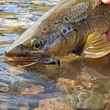


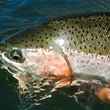








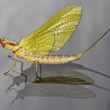









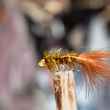
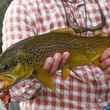

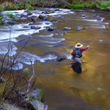
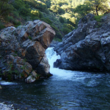
Comments
RJK replied on Permalink
Spencer,
what line did you use when you tested this rod?
Thanks.
Jameson replied on Permalink
Do you think the Sage ESN or the Winston is the overall better euro rod?
Kris replied on Permalink
I fish 95% Euro style nymphing. Nothing I've found at any price beats Grey's GR70. The Super X could have been amazing but it misses the mark as a Euro rod. The tip is too fast. It's not a bad rod and it does switch over to floating line well though, which the Grey's does not. For the price though I was disappointed. The fit and finish is excellent and I have no idea where they get their cork, it's amazing, but your money is best spent on the Grey's. The ESN is on par with the Super X. The rod tube is pretty delicate too. You won't want to throw it in a pack and trek through the bush with it. I scratched mine in the back seat of the truck on the first trip out.
Timothy M Tollett replied on Permalink
Great info on a great rod. I agree with the lack of a hook keeper. My background- I helped design this rod thus why the fighting butt, but sure wish they would have put a hook keeper on it!
Pages